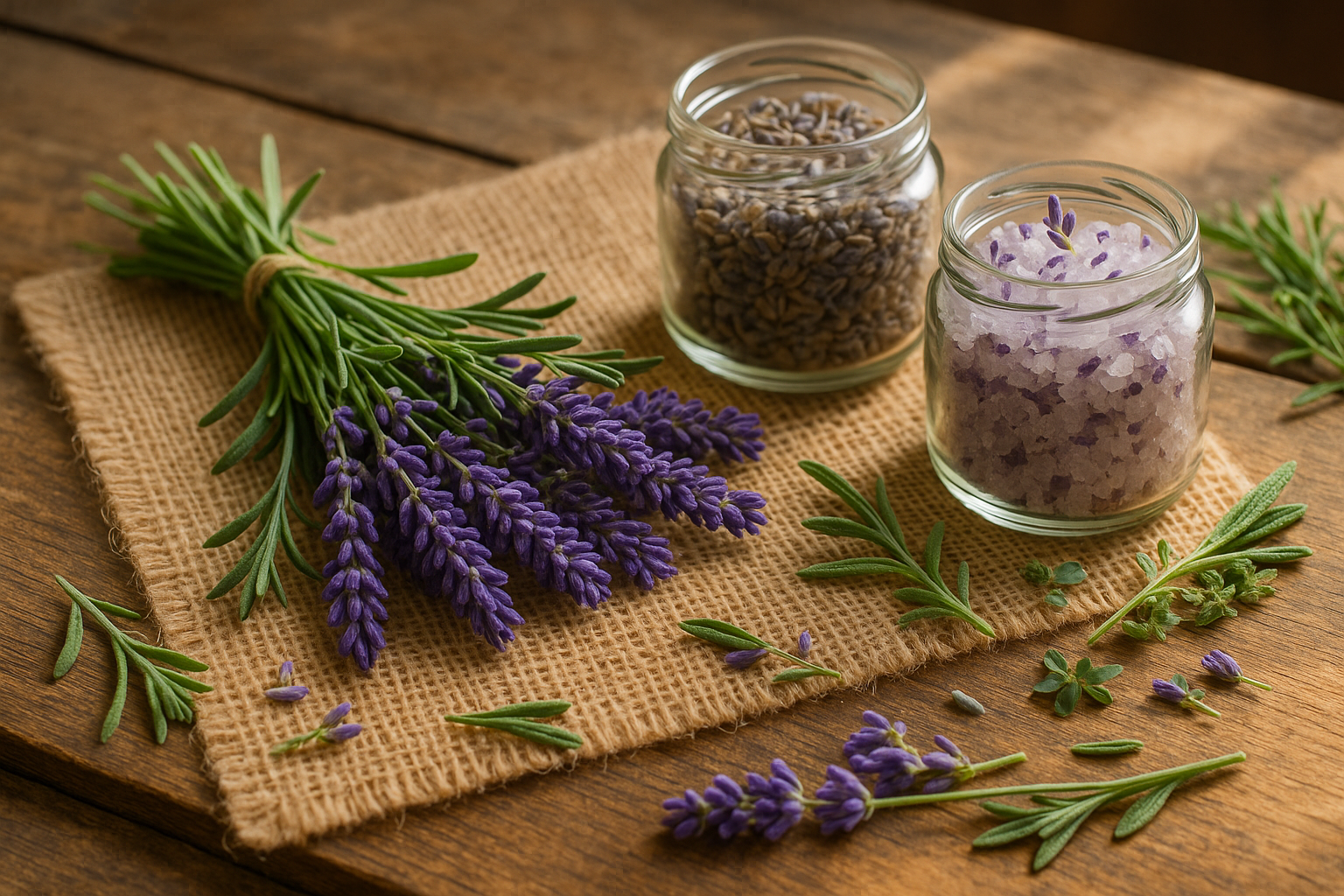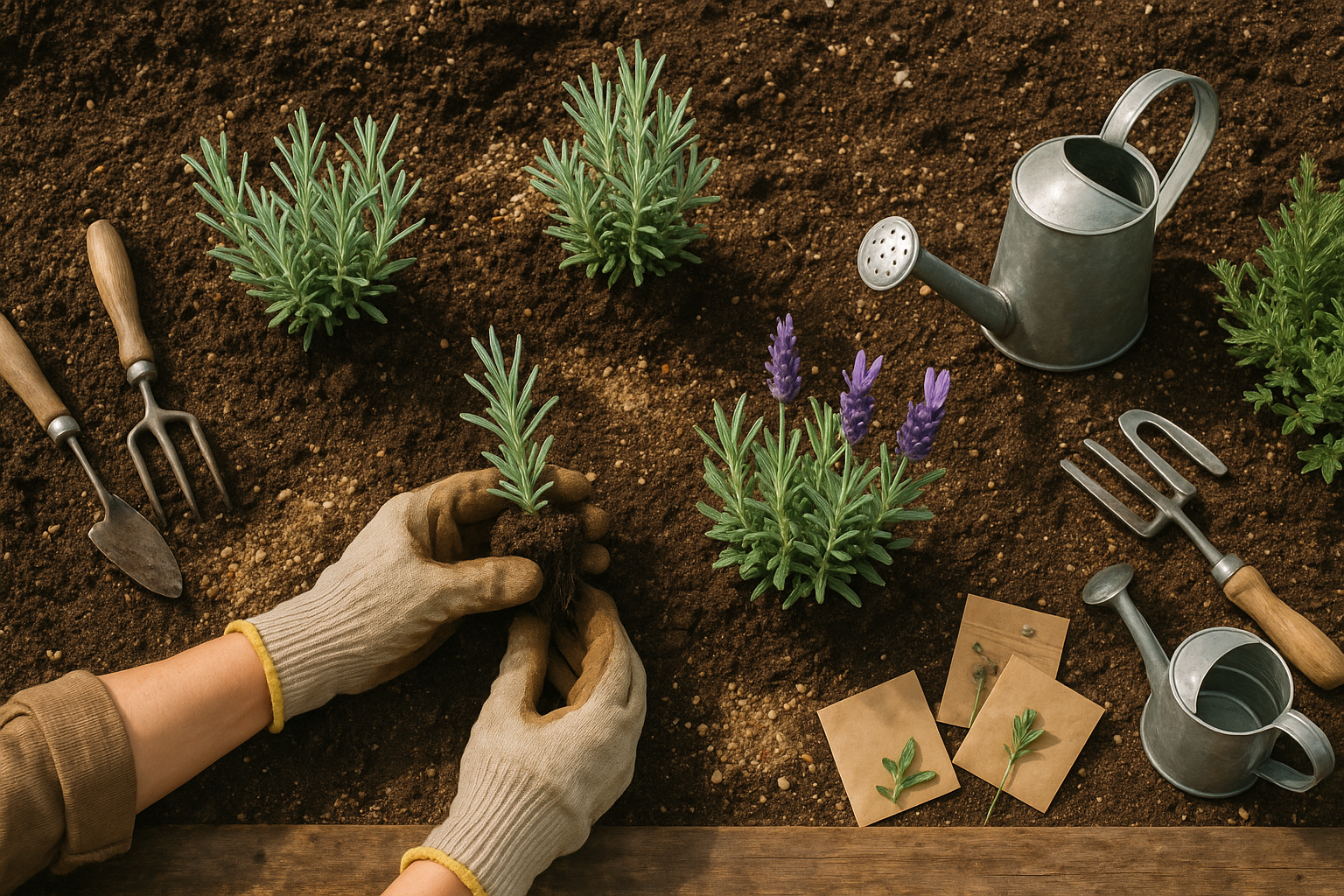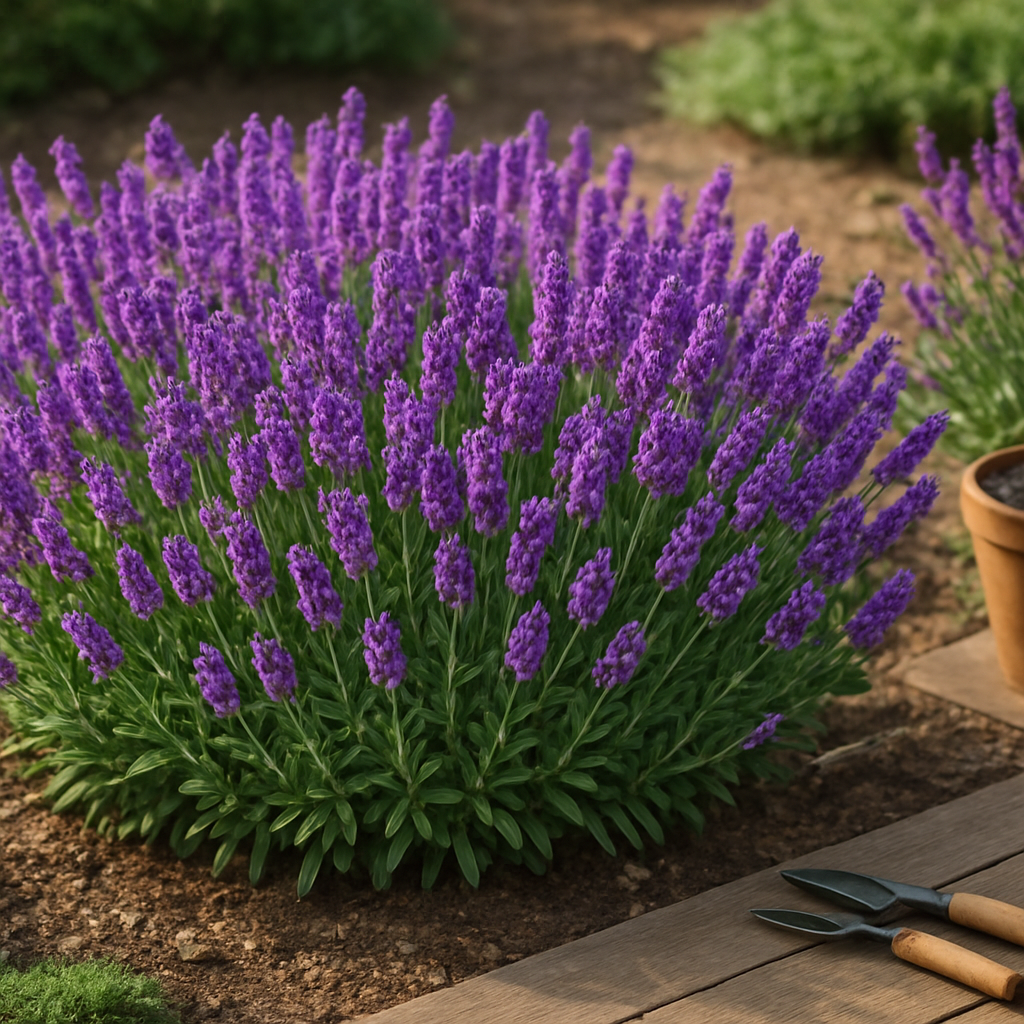Why Grow Lavender at Home?

Growing lavender at home is one of the most rewarding garden projects, even for beginners. This fragrant herb does much more than add a pop of beauty with its soft purple blooms—it fills the air with a relaxing aroma that can transform any patio, windowsill, or garden border into a peaceful retreat.
Lavender is not just pretty; it’s incredibly practical. Its blooms attract pollinators like bees and butterflies, helping your entire garden thrive. For home cooks, fresh lavender sprigs add a unique flavor to baked goods, lemonades, or even savory dishes. And if you enjoy DIY projects, lavender can be dried for use in potpourri, sachets, and homemade skincare products like bath salts or balms, making it a wonderful addition to your natural medicine cabinet.
One of lavender’s standout qualities is its adaptability—it grows well in the ground or in containers, making it perfect for small spaces, balconies, or traditional garden beds. Plus, lavender is famously low-maintenance: it loves sunshine, tolerates drought, and needs only occasional watering once established. With just a bit of care, even novice gardeners can enjoy a continuous harvest of beautiful blooms from spring through summer.
Cultivating lavender at home not only brings practical and visual rewards but also adds a feeling of accomplishment, knowing your efforts support both your wellbeing and the local pollinator community.
Understanding Lavender Types & Choosing the Right Variety
When choosing the perfect lavender for your garden or home, it’s helpful to know the key differences between the most popular types: English, French, Spanish, and hybrid lavenders.
English Lavender (Lavandula angustifolia)
English lavender is known for its sweet fragrance, compact growth, and impressive cold tolerance. It thrives in zones 5-9, making it ideal for colder climates or perennial outdoor beds. Its classic blooms are beloved in culinary dishes, potpourri, and sachets.
French Lavender (Lavandula dentata)
French lavender features serrated leaves and elegant, less-fragrant blooms. It prefers warmer, milder climates (zones 8-11) and shines as an ornamental or low-maintenance landscape plant.
Spanish Lavender (Lavandula stoechas)
Spanish lavender stands out with its cute ‘rabbit ear’ bracts atop flowers and a strong scent. This variety thrives in Mediterranean-like climates, tolerates heat well, and blooms early, making it perfect for containers or borders in sunny, frost-free areas.
Hybrid Lavenders (Lavandula x intermedia or lavandins)
Hybrid lavenders combine hardiness and prolific blooming. These larger, mounding plants have tall spikes and are valued for abundant, fragrant flowers used in essential oil production and bouquets.
Choosing the Right Variety
- Climate: Colder zones do best with English or select hybrids, while hot, dry regions favor French and Spanish types.
- Intended Use: Consider culinary needs, crafts, or ornamental appeal.
- Growing Location: English and some hybrids adapt well to pots with bright light, while French and Spanish varieties excel outdoors.
- Bloom Times: With careful selection, you can stagger varieties to enjoy months of color and scent.
When & Where to Plant Lavender
Knowing when and where to plant lavender can make all the difference for healthy, fragrant blooms. The best time to plant lavender outdoors is in the spring or early fall when temperatures are mild—generally after the last frost in cooler regions (zones 4–8) or in early fall for milder winter climates (zones 9–10), allowing roots to establish before the intense summer heat.
Choose a location that gets at least 6 to 8 hours of direct sun each day; lavender craves sunlight and will struggle in shady areas. Equally important is well-draining soil, as lavender roots are very prone to rot if they stay wet. Mixing gravel or sand into planting beds can help if your soil is heavy or clay-based.
Good airflow is also crucial, as it helps prevent fungal diseases. Avoid planting too close together or in low-lying, damp areas of your yard.
If you have limited outdoor space or colder winters, lavender grows happily in pots or containers—just ensure the pot has drainage holes and use a gritty soil mix, such as cactus or succulent potting mix, to mimic its native Mediterranean habitat. Indoors, place potted lavender in your sunniest window and avoid overwatering; let the soil dry out between waterings.
Whether you’re filling a garden border or brightening up a patio with container lavender, following these guidelines will help your plants flourish and scent the air with blooms all season long.
Step-by-Step

Planting lavender is easier than you might think, whether you’re starting with seeds, young seedlings, or cuttings. First, choose a sunny spot with well-draining soil—lavender hates wet roots!
Amend clay or heavy soil with sand or gravel to boost drainage, and mix in a bit of compost for nutrients without overdoing it. If you’re using seeds, sprinkle them lightly on top of the soil and just barely cover them with a thin dusting of soil; lavender seeds need light to germinate. Water gently with a spray bottle and keep the soil moist but not soggy, as too much water can rot the seeds.
When using seedlings or cuttings, dig a hole just large enough for the root ball and space plants 12–18 inches apart to allow airflow and encourage bushy growth; this is especially important in humid areas. Set the root ball level with the soil surface and backfill gently, pressing down to remove air pockets.
For initial watering, give the plants a deep soak right after planting, then let the soil dry out a bit before watering again—lavender thrives on a “less is more” watering schedule once established.
If planting in containers for a patio or balcony, use a pot at least 12 inches wide with drainage holes and fill it with a gritty, fast-draining mix (such as cactus soil blended with potting mix).
When transplanting lavender—whether from a container into the ground or between pots—be gentle with the roots, and try to move the plant in the cool of morning or late afternoon to avoid stress.
With these simple steps, even beginner gardeners can enjoy fragrant, healthy lavender blooms in their garden or on a sunny windowsill.
Essential Lavender Care
Caring for lavender starts with getting watering right—less is often more. Lavender thrives in well-drained soil and hates sitting in water, so allow the top inch of soil to dry out before each deep watering. In most climates, watering once every two weeks is enough for established plants; younger lavender may need weekly watering until roots are settled.
Avoid splashing leaves and never let the roots stand in soggy soil, as this quickly leads to root rot, the most common reason lavender fails.
Pruning is equally important for long-term health and vigorous blooming. In early spring or just after flowering, use clean, sharp shears to cut back about one-third of the plant’s soft growth, shaping the mound without cutting into the woody stems. Regular, light pruning prevents your lavender from becoming leggy while encouraging bushier growth and more flowers.
Fortunately, lavender isn’t a heavy feeder, so skip regular fertilizer; too much nitrogen can reduce blooms and make stems floppy. Instead, improve poor soil with a handful of lime or a top dressing of compost in early spring to keep pH balanced and drainage high.
Watch for pests like spittlebugs or fungal diseases, especially in humid areas. If you notice odd leaf spots or insects, increase air circulation by spacing plants apart and avoid overhead watering. Remove affected parts promptly and allow sunlight to do most of the work—lavender is remarkably resilient when given sun and dry conditions.
With these easy steps, your lavender should reward you with fragrant, healthy blooms season after season.
End-of-Season Care & Harvesting Lavender
As the lavender blooming season winds down, a bit of end-of-season care goes a long way in keeping your plants healthy and thriving for years to come. Start by trimming back flower stalks once most blooms have faded, cutting just above the woody stems. This not only keeps your plants neat but also encourages strong growth in spring.
In colder climates, protecting your lavender from harsh winter conditions is crucial. Add a layer of mulch, like straw or shredded bark, around the base to insulate the roots against freezing temperatures.
Harvesting Lavender
When it comes to harvesting, snip flower stems in the morning right after the dew dries but before the midday heat. This is when the essential oils—and that iconic lavender scent—are at their peak. Tie small bundles and hang them upside down in a dry, dark space with good airflow to preserve color and fragrance.
Using Dried Lavender
Once dried, lavender flowers are as versatile as they are beautiful. Beginners can:
- Tuck dried sprigs into sachets to freshen drawers
- Infuse petals in hot water to create soothing herbal teas
- Arrange them in simple bouquets for a fragrant pop of color at home
With a little thoughtful care and a few easy DIY projects, you’ll enjoy the scent and charm of your garden’s lavender well beyond the end of the growing season.
Simple Lavender Growing FAQs & Troubleshooting
Many beginners wonder why their lavender isn’t blooming as expected—often, it’s because the plant isn’t getting enough sunlight or the soil is too rich and moist. Lavender thrives in full sun and loves well-drained, slightly rocky soil; avoid heavy fertilizers that encourage leaf growth at the expense of flowers.
Yellowing leaves are another common concern, typically caused by overwatering or poor drainage. To fix this, let the soil dry out between waterings and consider amending the ground with sand or gravel to promote drainage.
Winter survival is a worry in colder regions. To help lavender weather the cold, plant it in a sheltered spot, avoid pruning too late in the season, and add a layer of mulch (such as straw or pine needles) around the roots—leaving the crown exposed so it doesn’t rot.
If you notice mushy stems or a foul smell, you may be dealing with root rot. This means your lavender’s roots are staying too wet. Replant in a raised bed or mound to keep the roots drier.
Pests like aphids can show up, but a quick spray with soapy water often keeps them in check.
Don’t be afraid to try different varieties and approaches—gardening is as much about learning as it is about results.
For more detailed help, local garden centers, university extension programs, and online forums are invaluable resources as you continue your lavender journey.
